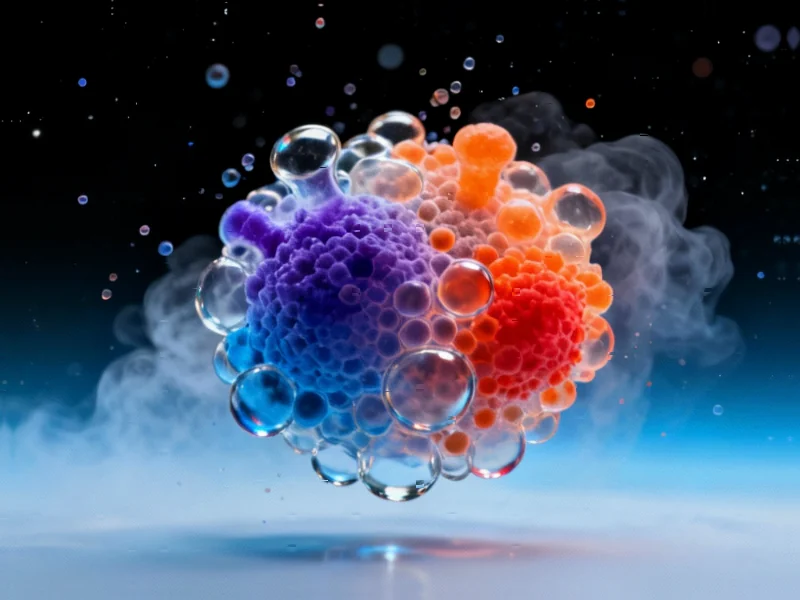Breakthrough in Biosignature Research
Scientists have made significant progress in the search for extraterrestrial life by analyzing the colorful protective pigments of microbes living high in Earth’s atmosphere, according to recent research. For the first time, researchers have measured the reflectance spectra of microorganisms collected from the stratosphere, providing new tools for detecting potential life on distant planets.
Table of Contents
Stratospheric Microbes as Universal Biosignatures
The study reveals that diverse microorganisms inhabiting Earth’s upper atmosphere produce protective pigments that could serve as detectable biosignatures for similar life forms elsewhere in the galaxy, sources indicate. These organisms, found at concentrations up to 100,000 microbes per cubic meter, create colorful compounds primarily to shield themselves from intense ultraviolet radiation at extreme altitudes.
According to reports from Cornell University researcher Ligia Coelho, these biopigments represent a “powerful and surprisingly universal biosignature” that could evolve on any planet with a star. “Since UV is a universal stressor for life on any planet with a star, it’s plausible that reflective pigments serving the same function could evolve elsewhere, too,” Coelho stated in the research findings.
Innovative Collection and Analysis Methods
The research team employed innovative methods to study these atmospheric microorganisms. Scientists reportedly used helium balloons equipped with sticky collection rods to capture microbes from altitudes ranging between 3 and 38 kilometers above Earth’s surface. The microbial samples were then cultured and analyzed for their spectral properties.
Analysis revealed that the microbes produced a range of yellow, orange, and pink colors created by carotenoid pigments, including beta-carotene—the same compound that gives carrots their distinctive color. Researchers then modeled how these reflectance spectra would appear under different planetary conditions, such as on wetter or drier worlds.
Implications for Exoplanet Research
This breakthrough comes at a crucial time for astronomy, as scientists increasingly search for life beyond our solar system by analyzing light reflected from exoplanets. Until now, clouds surrounding distant planets have been considered obstacles because they obscure both atmospheric and surface-level biosignatures. However, the new research suggests these very clouds could potentially reveal biological activity.
“Our planetary simulations show that if a planet’s clouds had high concentrations of these microorganisms, their spectra would potentially change in a detectable way,” Coelho explained in the report. Future space telescopes, such as NASA’s proposed Habitable Worlds Observatory, could leverage these findings to enhance the search for life in other star systems.
Detection Challenges and Requirements
Despite the promising research, significant challenges remain in detecting these microbial signatures across interstellar distances. Analysis suggests that current concentrations of airborne microbes in Earth’s atmosphere fall far below detection thresholds for existing technology.
“Based on the resolution expected for NASA’s Habitable Worlds Observatory, we would need microbial cell densities comparable to those found in an ocean algae bloom, which are indeed detectable from space,” Coelho noted in the findings. This indicates that while the method shows promise, it would require exceptionally dense microbial populations to produce detectable signals.
Scientific Community Response
The research has generated mixed reactions within the scientific community. Clare Fletcher at the University of New South Wales suggested that searching for both carotenoids and chlorophyll could be productive, but cautioned that “it assumes that life on these exoplanets would be similar to life on Earth, which may not be the case.”
Other researchers expressed more skepticism about the practical application of these findings. Peter Tuthill at the University of Sydney noted the technical challenges, stating he was “glad I don’t have to design the instrument to pick out that biosignature out of the noise at a distance of 20 parsecs.”
Future Research Directions
The study establishes a foundation for future astrobiological research by providing the first comprehensive database of reflectance spectra from atmospheric microorganisms. As telescope technology advances and our understanding of extremophile life expands, these colorful microbial signatures could become valuable tools in humanity’s ongoing quest to answer whether we are alone in the universe.
Researchers emphasize that while the detection of such biosignatures remains challenging with current technology, the study represents an important step toward developing more sophisticated methods for identifying potential life on distant worlds through their atmospheric characteristics.
Related Articles You May Find Interesting
- Channel Islands Consider Inclusion in UK Digital ID Initiative
- Barloworld’s Privatization Milestone: What 90.7% Stake Means for Future Strategy
- OpenAI Explores E-Commerce Integration as ChatGPT Shopping Capabilities Evolve
- Apple’s Strategic Dilemma: To Buy or Build in the Streaming Wars?
- Wisconsin’s Lighthouse Project: A New Era for Sustainable AI Data Centers
References
- https://astro.cornell.edu/ligia-fonseca-coelho
- https://microcell.ifas.ufl.edu/people/brent-christner/
- https://www.unsw.edu.au/…/clare-fletcher-grs-profile
- https://www.sydney.edu.au/…/peter-tuthill.html
- http://en.wikipedia.org/wiki/Electromagnetic_spectrum
- http://en.wikipedia.org/wiki/Ultraviolet
- http://en.wikipedia.org/wiki/Microorganism
- http://en.wikipedia.org/wiki/Earth
- http://en.wikipedia.org/wiki/Pigment
This article aggregates information from publicly available sources. All trademarks and copyrights belong to their respective owners.
Note: Featured image is for illustrative purposes only and does not represent any specific product, service, or entity mentioned in this article.



